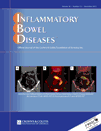Protein and energy metabolism response to the initial dose of infliximab in children with Crohn's disease
Abstract
Background: Tumor necrosis factor-α (TNF-α) may contribute to the alterations in protein and energy metabolism present in children with Crohn's disease (CD), who frequently suffer from growth disturbance. We hypothesized that anti-TNF-α therapy would reduce protein losses, due to decreased proteolysis and increased protein synthesis, and that anti-TNF-α therapy would decrease resting energy expenditure.
Methods: Children with active CD underwent metabolic assessment immediately before and 2 weeks following initial infliximab infusion. Using the stable isotopes [d5] phenylalanine and [1–13C] leucine, 2 independent measures of protein metabolism were determined during fasting and in response to parenteral nutrition. Energy expenditure, determined by indirect calorimetry, was measured in fasting and parenterally fed states.
Results: Fifteen children completed the study. Following infliximab therapy, significant reductions in proteolysis (P < 0.05) were noted in the fasting state (8%–11%) and during parenteral nutrition infusion (10%–12%). Phenylalanine utilization for protein synthesis decreased significantly (8%–13%) following infliximab (P < 0.05). Protein balance was not significantly altered. No significant changes in energy expenditure were observed following infliximab in fasting or parenterally fed states. Supplementation with parenteral nutrition resulted in significantly decreased proteolysis (8%–21%; P < 0.05), increased protein synthesis (37%–45%; P < 0.01), and improved protein balance (P < 0.01) compared to the fasting state.
Conclusions: Following the initial infliximab infusion in children with CD, proteolysis and protein synthesis were significantly reduced in the fasting and parenterally fed states. Supplementation with parenteral nutrition resulted in significant improvements in protein metabolism compared to the fasting state both before and after infliximab therapy.
(Inflamm Bowel Dis 2007)




